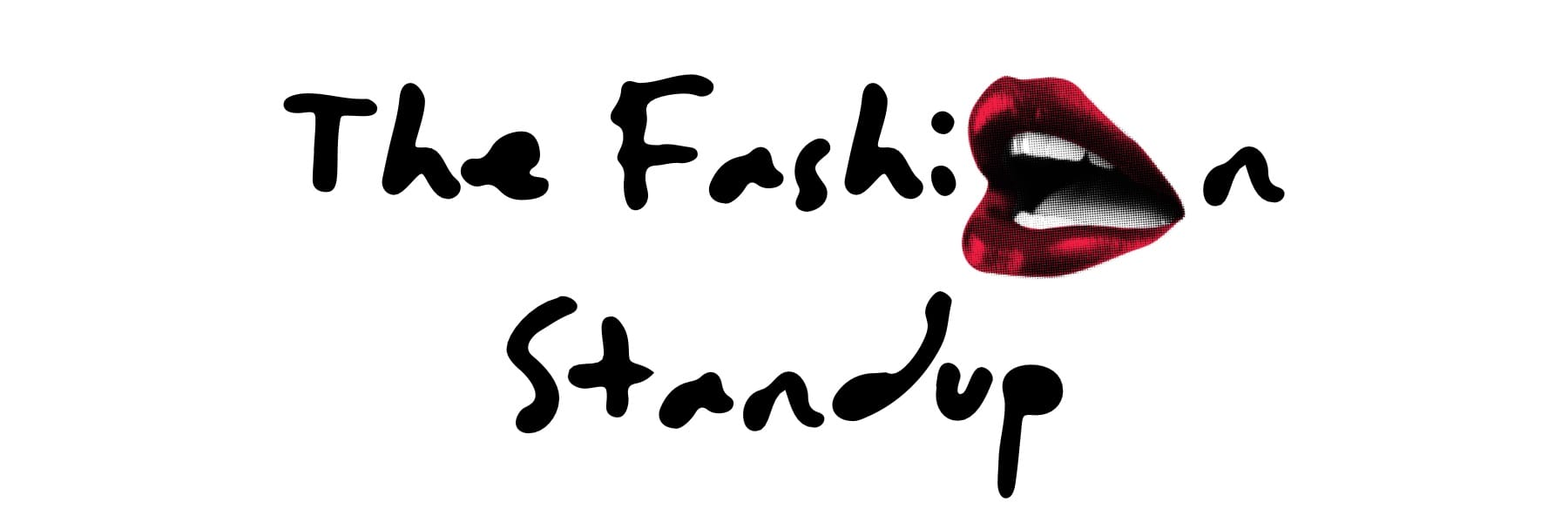Viggo Godfrid - Barbie & Haute Couture
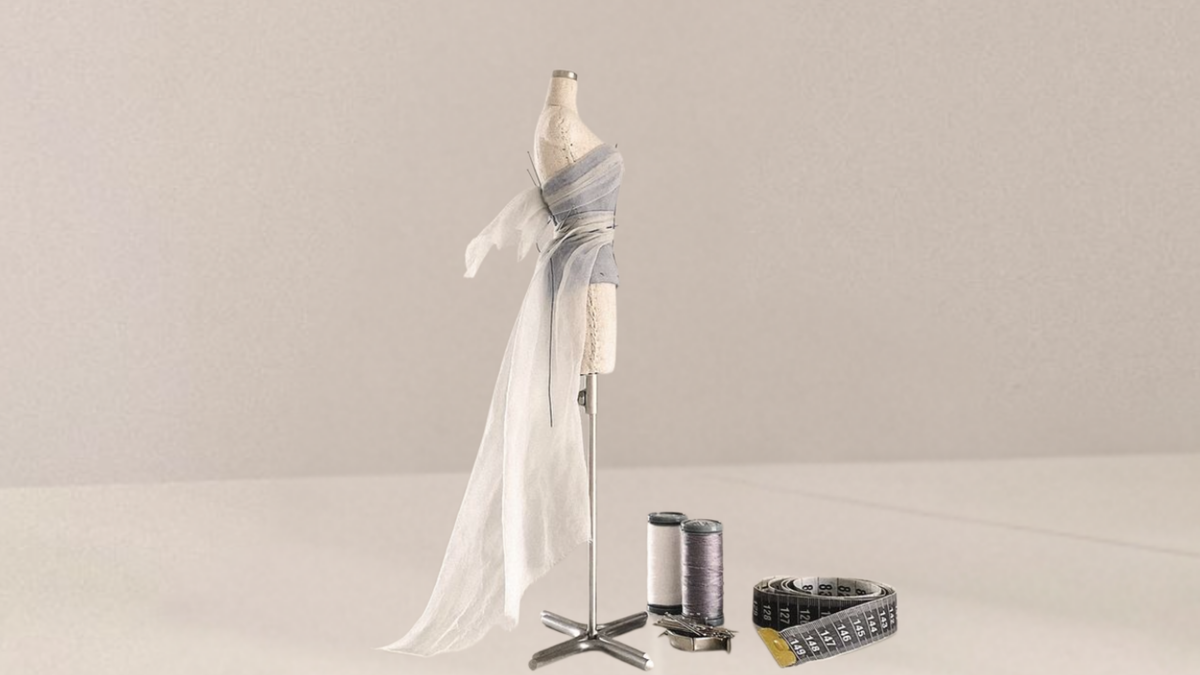
This week we're going to talk about Barbie and no, we're not going to talk about Barbiecore or Margot Robbie. The theme of this edition is the brand Viggo Godfrid - an artisanal couture brand dedicated to dressing vintage Barbie.
For those who may wonder about this brand's relationship with what was outlined as the focus of The Fashion Standup, the answer is simple. Viggo is a fashion designer, graduated from the London College of Fashion. And since it's not just training that makes a designer - in his brand he applies the principles and processes of fashion design. Viggo Godfrid is a brand and a business, which responds to a niche market. Even if, for now, it is not the customers themselves who wear their pieces.
During the planning and pre-launch of this project of mine, I spent a lot of my time on Instagram, networking and looking to meet new people. I didn't aim for Simon Porte to follow me back. I wanted to discover Fashion students, freelancers, who is starting out, who has been doing very interesting things for a while and is not favored by the algorithm and who has not yet been written about. And so, I discovered this brand and this incredible designer.
Working on Fashion on different scales has always attracted me, or at least since I learned what the “Théâtre de la Mode” was - I must have been 12 years old when I heard this name for the first time at an incredible conference at Teatro da Trindade in Lisbon. I promised to give you more details when I write an essay about what it was like to grow up, in part, in the scene Fashion scene .
The “Théâtre de la Mode” was an initiative by 40 French couturiers (names such as Balenciaga, Schiaparelli, Madame Grès, Jean Patou, among many others) as a show of resilience in the face of the difficulties experienced after the Second World War. To the scarcity of materials and a weakened economy, these icons answered with dolls, with a scale of 1:3 and an exhibition that would become itinerant, which opened at the Louvre Museum on March 28, 1945.

So for me, different scales and Fashion is an equation of hope and even sustainability.
Throughout my academic career I worked on a 1:3 scale, which at a certain point would become a signature of my creative process, but never with the detail and precision of the protagonist of this article.
Viggo Godfrid goes further, working on a Barbie scale, approximately 1:6, with care and detail that fascinated me. Thus, via Instagram DM and several emails, the first interview in this virtual space was carried out.
Or perhaps it's better to say that this is how the Barbie's couturier answered the TFS questionnaire:
Tell us a little bit about yourself and your work.
I was always interested in art related scene, I finished both art school and went to art college before moving to London. Since obtaining both BA and MA in fashion design and graduating from London College of Fashion in 2018 I have worked in a number of brands. Unfortunately I did find many flaws in the industry I was once so passionate about, however I managed to find the right balance in my work that brings me happiness and fulfillment. Now I work with a few brands remotely where I lead creative and design direction for their collections. This as well helps me direct my attention to other things in life including my endeavor with Barbie.
You graduated from London College of Fashion, right? Did you experienced with different scales during your time in fashion school? Tell us a little bit about that.
Whilst at LCF I only really worked with a full scale female figure and the idea of switching to a smaller scale's never really crossed my mind. Although I do remember my second place of work and one of the pattmercutters there used a small mannequin to work out a skirt of a gown we were making. There we made mostly evening wear so I thought it was a very clever way of working since toiling a large skirt each time would take a lot of material and time resources.
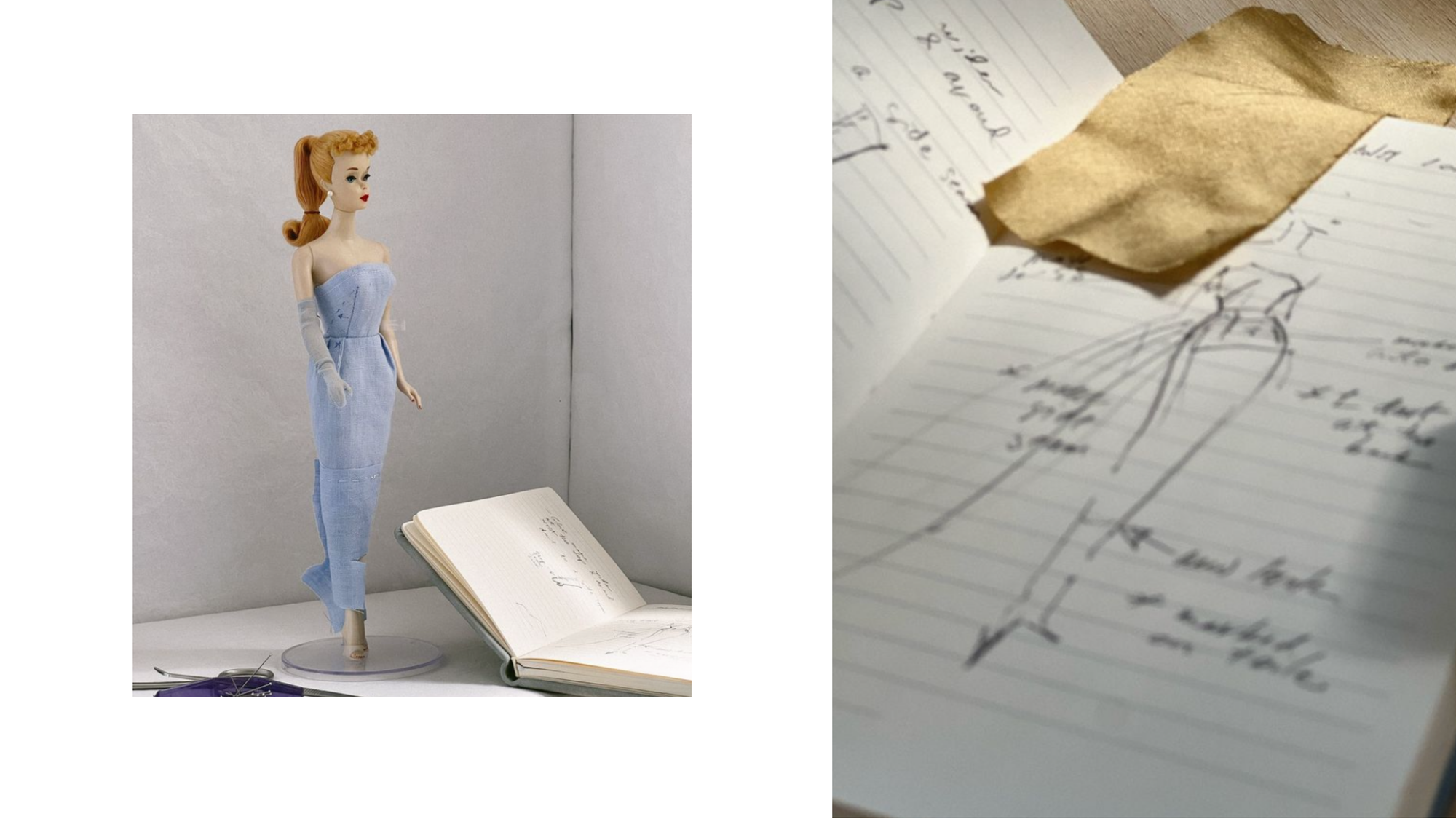
How this journey of Barbie Couture started? And why is it so special to you?
My journey with Barbie started last year. I was watching Trixie Mattel's video on YouTube about many different barbies she owned and in particular I really loved the bit about the early Barbies and their fashion from the late 50's. So I started researching though YouTube creators and books. I realized that I really want to own a number 3 Barbie and that was kind of the driving force behind my obsession haha. But between scanning eBay listings every day I kept researching about early Barbie's fashions, the way they were so accurately made and hand-finished in Japan, how natural fabrics were chosen for the design and how designs themselves were based on the most popular Parisian collection of the time. It kind of made me realize that this was such a beautiful and artisanal imitation of real life but it also made me realize that at some point Mattel took a more fantasy-like and imaginary kind-of-approach to Barbie. And that's when I think I started to play with the idea that I want to bring back that early feel of Barbie's wardrobe, very true-to-life, high quality and tasteful.
Viggo Godfrid is also a fashion brand, you do "made to order", right? In general terms, can you tell us about who are your clients?
I set out to make two seasonal collections a year like most fashion houses do. In between those collection I also plan to do special projects for and with my followers on Instagram so hopefully I will be fun for everyone. You are right, I also do make-to-order, but I prefer to put my own spin on the design I eventually give to my client as I do not like to merely repeat the original reference because I do not want to do atelier work, if that makes sense.
My clients are the greatest Barbie and other doll enthusiasts, all of which are as passionate about collecting and custom pieces as I am about making them. I'm actually super happy I started and joined this community because I started talking to people from many walks of life, and people that don't necessarily collect Barbies but somehow enjoy what I do and for that I'm also super grateful.
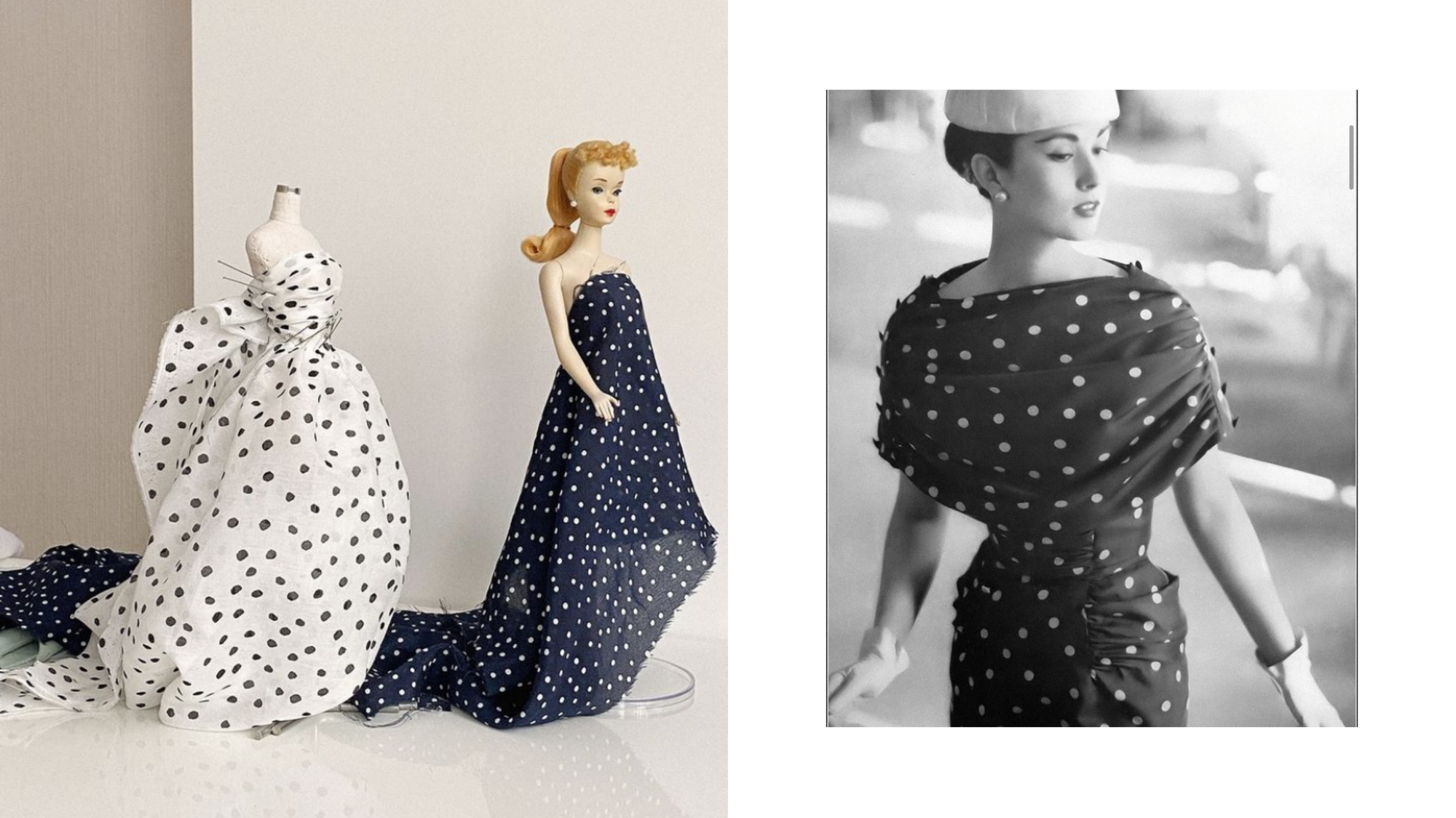
Can you describe the difference between working for human scale and working for Barbie scale?
The one difference that's out there is the amount of fabric and size of patterns haha. Now I can make a whole look with a piece of fabric 20 x 20 cm. And I don't have to have a whole table just to cut something out. But it comes with many difficulties that you don't think about when design on a full scale. For instance your patterns actually have to be super precise, 1 or 2 mm make a huge difference! Same goes for fabrics, I think I have to think about fabric even more now in terms I previously haven't thought about. I now always think about the thickness of fabrics, whether it would work for a particular jacket of a skirt, would it drape, would it hang the way I want to, would it work as lining, if so wouldn't it make the garment too bulky, perhaps I should make just the facing and hand cast the raw edges, should I do a zip or a popper, would it work for a veil or is it too soft, how do you make tiny bows or a cigarette holder... These are some of the questions that I face when designing for Barbie. I'm also on a constant look-out for things and materials that could work and this hunt is kind of fun too.
If you don’t mind that ask you this, is this project your full time fashion solopeneurshop or is it your side hustle?
At the moment it is, should I say.. my safe place. But it is also something I would very much like to grow and make into something interesting. Let's see where it goes.

Do you see yourself as an independent fashion designer? In a way that besides that this brand is owned by you, And also taking into consideration, the definition of independent fashion designers, where many academics support the idea that independent fashion designers are more focus on creative freedom and work life / personal life balance than on money ir profit, just for the sake of money itself.
I see myself as just a fashion designer, whether it is me designing for the brands I work or Barbie I make tiny garments for. Exception is that with Barbie it is truly me thinking about art, I'm not limited by budgets, buyers, customers, trends, etc. I'm also free to experience different styles, eras and talk to people along the way that appreciate these things as much as I do. So no, money and profit is not the end goal for me and in that sense you can say I am an independent designer.
You are super careful with your content creation and you make beautiful content.You have more than 1500 followers on Instagram, as we know, nowadays, the most important thing in digital marketing is not having a huge audience but having targeted and niched one, that I believe you do have, I also noticed that your feed displays adds do you focus on content creation as an additional way to bring income to your brand now or in the future? Do you take the creators into consideration?
Excellent question. I enjoy making visual language generally and a slave to all things pretty so I do pay extra attention to content. I think it goes hand in hand with what I do now and it's a perfect way to communicate to my followers so yes I do plan and hope for future collaborations with creators as well as working out a style I suppose to my content too.
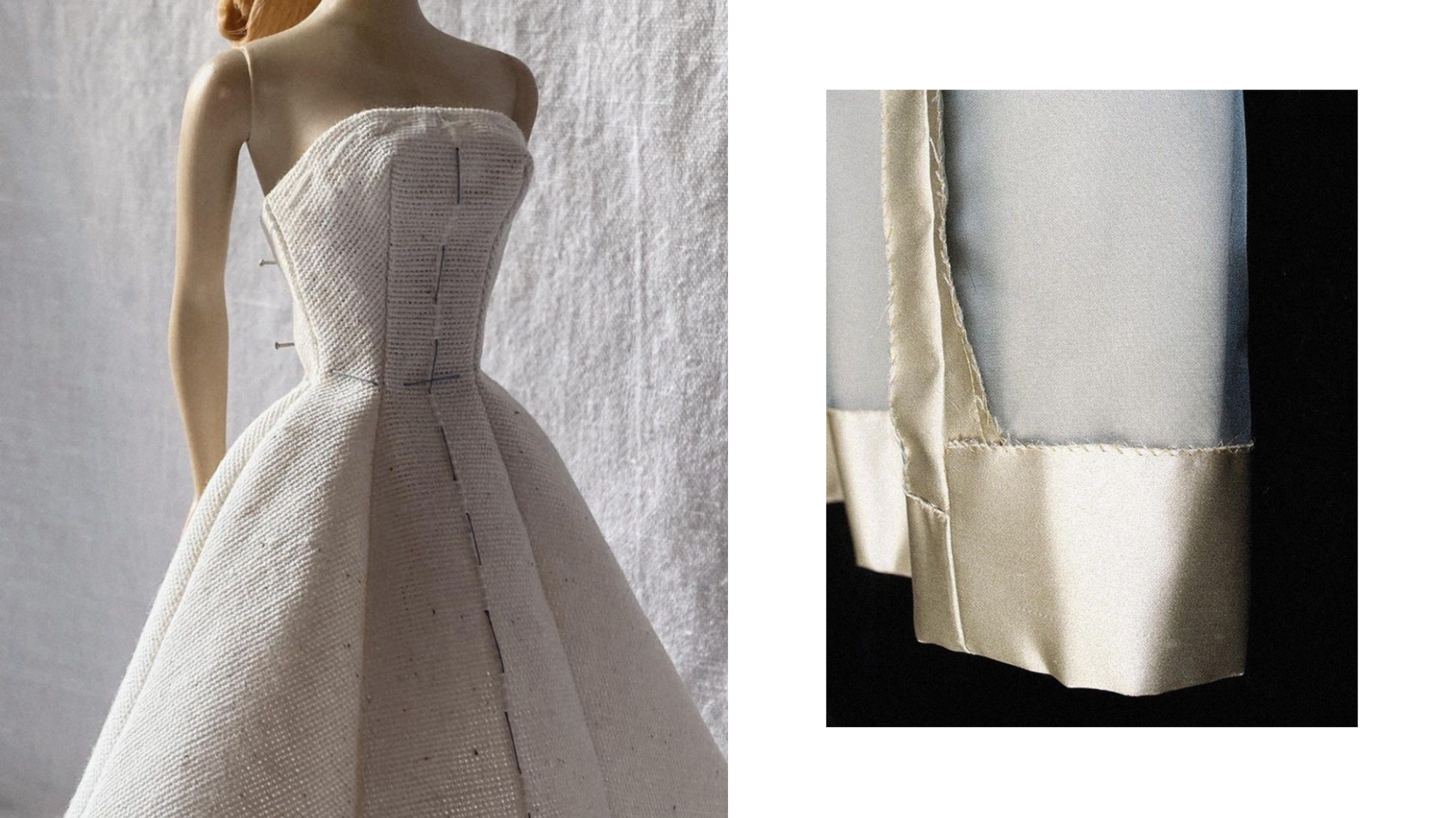
How do you see and describe your brand inside the recent fashion system context?
I'd say it is a responsible slow fashion brand in the best traditions of the past.
How do you imagine your brand development if you won the lottery, but you could only use it to invest in your brand?
I think I would definitely get a second model. I'm yet to get a brunette girlfriend for my blonde number 3. But if I'm being serious, I think I'd invite more people to join to make it a bigger brand perhaps where we could make doll clothes of exquisite quality and style. And then perhaps if people like the designs and want to make them not just for dolls but for themselves ( and I did have a few enquiries from followers already) then we could make that for them too.
